On this page you will find The process of meiosis in animal cells Grade 12 Life Sciences Notes under Meiosis, which includes revision activities with questions and answers to help grade 12 learners to prepare for their tests and exams.
Notes
Meiosis is the type of cell division used to produce gametes or sex cells (sperm and egg cells). A cell undergoing meiosis will divide twice – the first division is meiosis i and the second is meiosis ii.
In the first meiotic division, the number of cells is doubled, but the number of chromosomes is not. This results in half as many chromosomes per cell. In the second meiotic division, the number of chromosomes does not get reduced.
Meiosis is a process in which the number of chromosomes per cell is cut in half through the separation of homologous chromosomes in a diploid cell.
The diagram alongside shows how meiosis starts with a diploid cell and divides twice (meiosis I and II), resulting in four haploid cells.
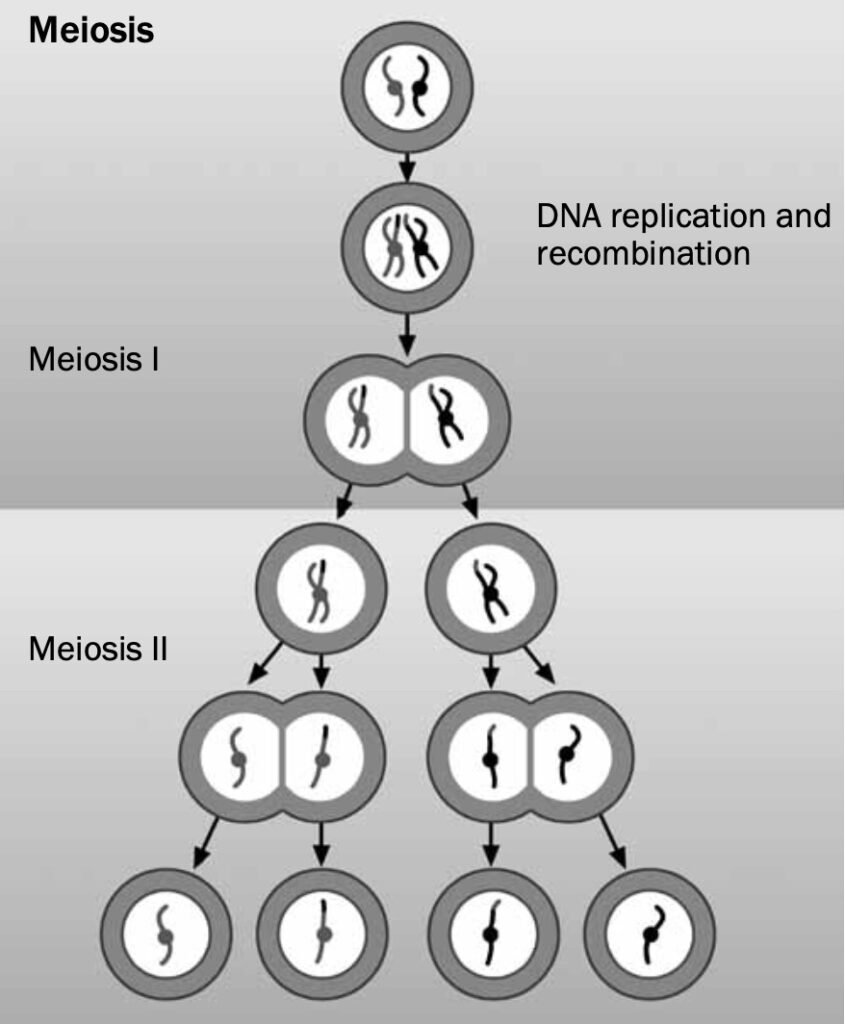
Video Lesson on The process of meiosis in animal cells
First meiotic division
Prophase 1
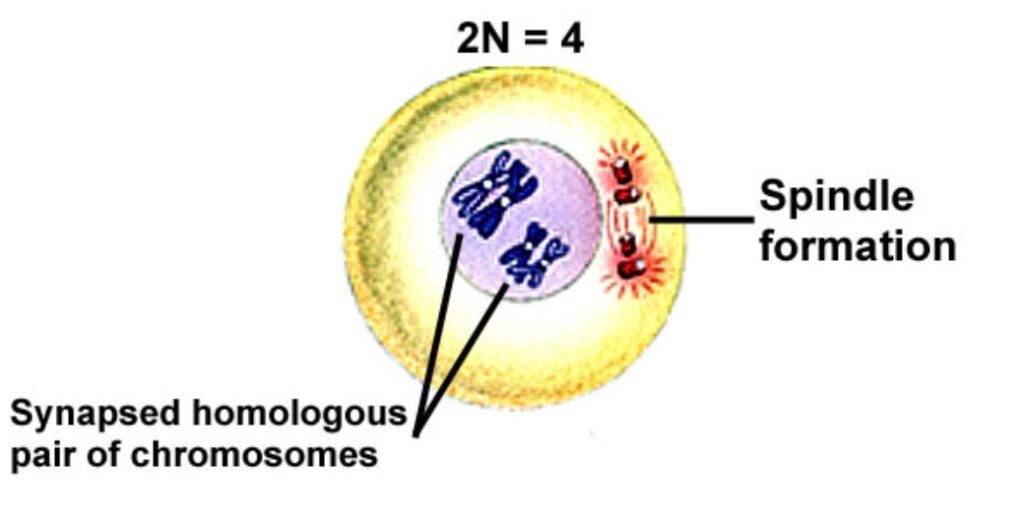
- Chromosomes shorten and become visible as two chromatids joined by a centromere.
- Homologous pairs of chromosomes are now visible.
- The nuclear membrane and nucleolus disappear.
- The spindle starts to form.
- Chromatids from each homologous pair touch. The point where they touch is called a chiasma.
- DNA is crossed over (swopped) at the chiasma.
- The spindle continues to form.
Metaphase 1
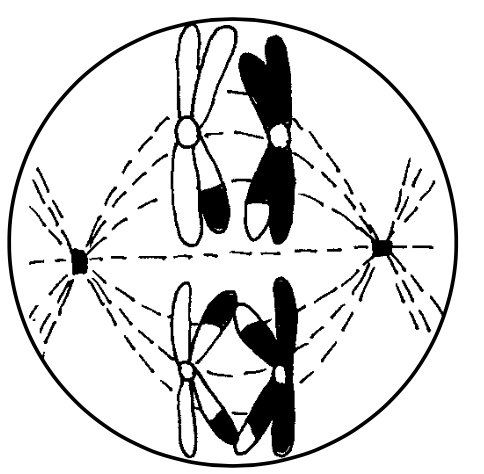
- The spindle extends across the whole cell.
- The homologous chromosomes line up along the equator of the spindle in their homologous pairs.
- One chromosome of each pair lies on either side of the equator.
- The centromere of each chromosome attaches to the spindle fibres.
Anaphase 1

- The spindle fibres shorten and pull each chromosome of each chromosome pair to opposite poles of the cell.
Telophase 1
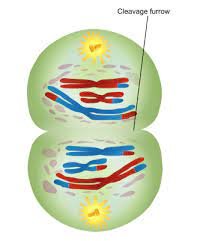
- The chromosomes reach the poles of the cell.
- Each pole has half the number of chromosomes present in the original cell.
- The cell membrane constricts and divides the cytoplasm in half to form two cells.
Second meiotic division
Prophase 2
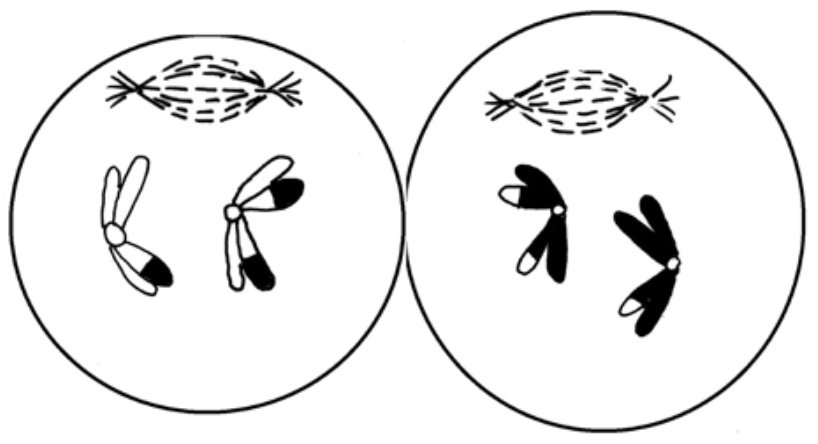
- Each cell formed during meiosis I now divides again.
- A spindle forms in each of the new cells.
Metaphase 2
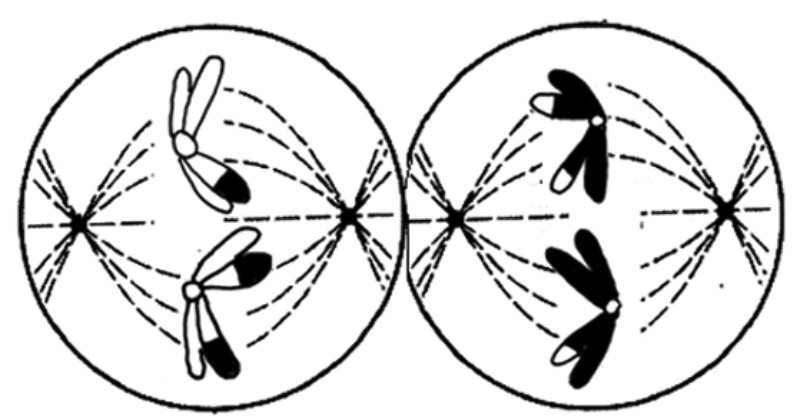
- Individual chromosomes line up at the equator of each cell, with the centromeres attached to the spindle fibres.
Anaphase 2
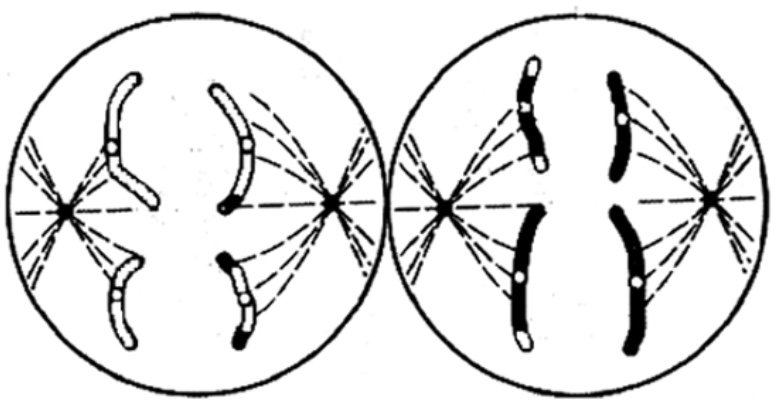
- The spindle fibres start to contract.
- The centromeres split and daughter chromosomes/ chromatids are pulled to the opposite poles of each cell.
Telophase 2
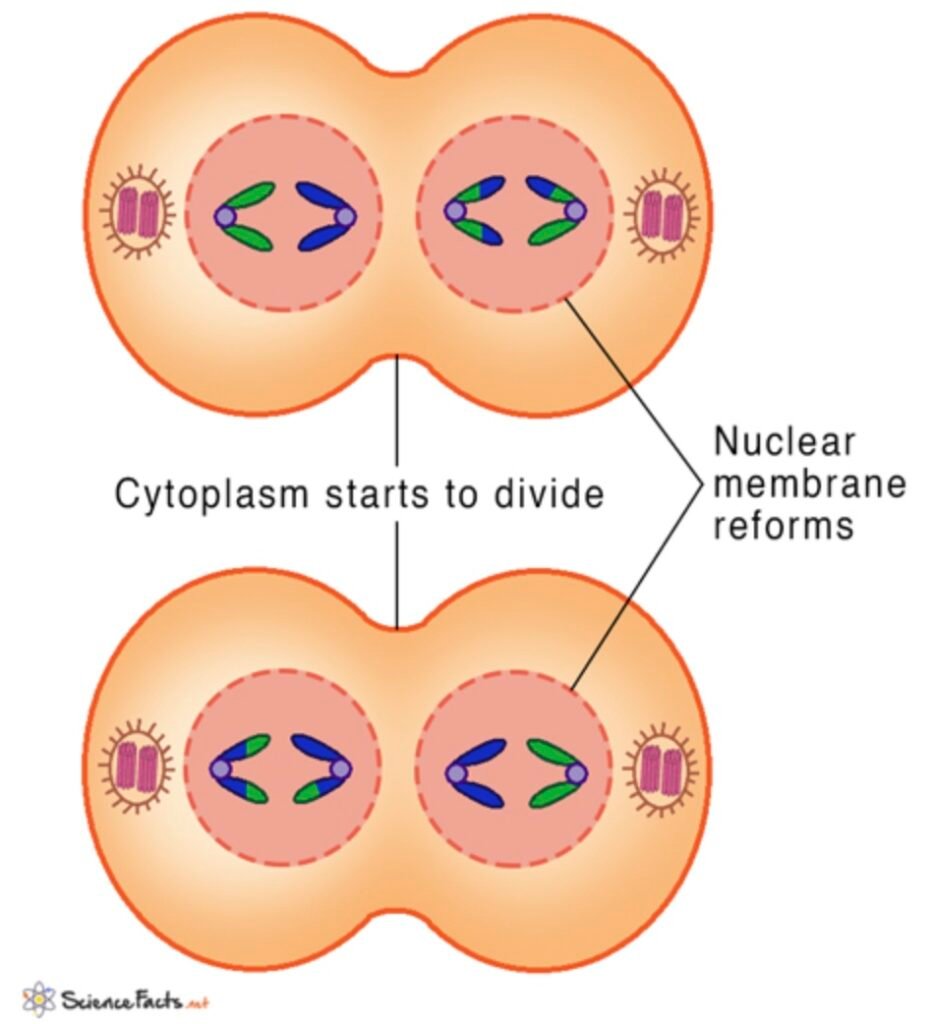
- The daughter chromosomes/chromatids reach the poles and a new nucleus forms.
- The cell membrane of each cell constricts and the cytoplasm divides into two cells.
- Four haploid daughter cells are formed.
- Each daughter cell has half the number of chromosomes of the original cell.
- The daughter cells are genetically different from each other.
PDF Downloadable Notes on The process of meiosis in animal cells:
Question and Answers Activities:
Find short and long questions for Grade 12 Life Sciences, which will help you to prepare for the exams, tests, practical tasks, and assignments.
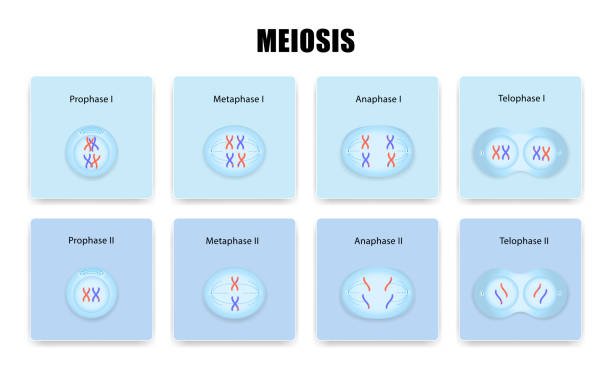
View all #Life-Sciences-Grade12 Study Resources
We have compiled great resources for Life Sciences Grade 12 students in one place. Find all Question Papers, Notes, Previous Tests, Annual Teaching Plans, and CAPS Documents.
More Resources
- https://www.elimuza.com/grade-12/item/1037-meiosis-life-sciences-study-guides-and-notes-grade-12
- https://www.studocu.com/en-za/document/further-education-and-training/life-sciences/grade-12-life-science-meiosis-fet-phase/17623978
- https://www.yourgenome.org/facts/what-is-meiosis
- https://learn.mindset.africa/resources/life-sciences/grade-12/meiosis
- https://passel2.unl.edu/view/lesson/f57a1a8ce6f5/12
Meiosis Notes: What is meiosis, The process of meiosis in animal cells, The significance of meiosis, Abnormal meiosis, and Differences between meiosis I and meiosis II.
